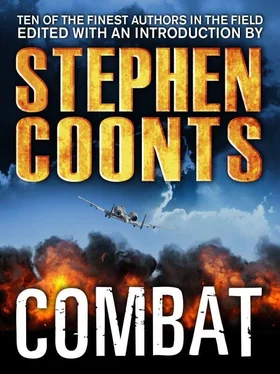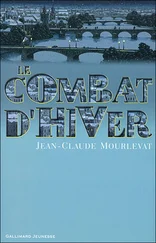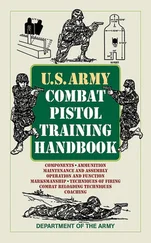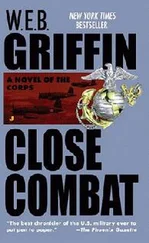“It’s a complicated screening process,” Norman offered disinterestedly. “We analyze cost versus life cycle versus benefit. We get all the numbers on what the Pentagon wants to do with the fleet, then try to justify the cost of a modification with its corresponding …”
“It was a simple replacement — a few feet of old worn-out pyrotechnic actuators, replacing thirty-year-old components that were predicted to fail in tropical conditions. A few thousand bucks per seat. Instead, the budget weenies cut the upgrade program. Lo and behold, the first time a couple of our guys try to punch out near Diego Garcia — actuator failure, two seats. Two dead crewdogs.”
“Like I said, Colonel, I can’t discuss particulars of any file or investigation,” Norman insisted. “In any case, every weapon system from the oldest to the newest has a cost-reward break-even point. We use purely objective criteria in making our decision …”
“Tell that to the widows of the guys that died,” the colonel said. He shook his head disgustedly and turned away from Norman.
What an idiot, Norman thought. Trying to blame me or my office for the deaths of two flyers because of a cost-analysis report . There were thousands, maybe tens of thousands of factors involved in every accident — it couldn’t all be attributed to budget cuts. He was considering telling the guy off, but he saw the staff wheeling carts of personnel folders down the hallway, and he kept silent as they took seats and got ready to work.
In a nutshell, Norman observed, careers were made or destroyed by a simple numbers game. The Selection Board Secretariat’s staff members wheeled in a locked lateral file cabinet on wheels with almost four hundred Officer Selection Reports, or OSRs, in them. Although there was supposedly no time limit on how long each panel member considered each OSR, the board members were asked to finish up the first round of scoring in the first week. That meant they had no more than about five minutes to score each candidate.
Five minutes to decide a career, Norman thought as he opened the first file. Five minutes to decide whether this person deserved to be promoted, or should stay where he was, or even if he or she should even be in the Air Force to begin with.
Well, maybe it won’t be that hard, Norman thought as he scanned the OSR. The first thing he saw on the right side of the folder was the candidate’s photo, and this guy was a mess. Hair too long, touching the ears. A definite five o’clock shadow. Cockeyed uniform devices. Norman had a chart available that showed the proper order ribbons should be displayed on the uniform, but he didn’t need to refer to it to know that the Air Force Training Ribbon was not placed over the Air Force Achievement Medal.
Each board member had a checklist of things to look for in a personnel jacket, along with a sheet for notes or questions and a scoring summary block. Each jacket was given a score between 6.0 and 10.0 in half-point increments. The average score was 7.5. Norman decided he would start at the maximum score and deduct half points for every glitch. So this guy was starting out with a 9.5, and he hadn’t even gotten to the job performance and effectiveness reports and ratings yet. Below the photo was a list of the officer’s decorations and awards and an officer selection brief, outlining the candidate’s duty history. This guy was not wearing a ribbon he had been awarded, so Norman deducted another half point. How inept could one officer be?
And yes, Norm noted that he was a flyer.
On the left side of the OSR were the candidate’s OERs, or Officer Effectiveness Reports, starting with the most recent. Norman scanned through the files, paying close attention to the three rater’s blocks on the back page. Each OER was endorsed by the officer’s three sequential superior officers in his chain of command. He received either a “Below Average,” “Average,” “Above Average,” or “Outstanding” rating, plus a block below for personal comments. An OER with all “Outstanding” ratings was called a “firewalled” OER, and all officers seeking promotion aspired to it.
After filling out hundreds of OERs in his career, Norman knew that anything short of an “Outstanding” rating was cause for concern, and he dinged a candidate for any “Above Average” or lower ratings. But since some commanders always “firewalled” OERs, Norman had to take a quick glance at the rater’s comments, even on “firewalled” OERs. He looked for examples of deficiencies or nuances in the wording to suggest what the rater really thought of the candidate. Most all raters used the word “Promote” in his comments, so if the word was missing, that was a big ding — the rater obviously did not think the candidate was worthy of promotion, so why should Norman? If the candidate was really good, the rater might put “Promote ASAP” or “Promote without fail;” if the candidate was exceptionally good, he might say “Promote immediately” or “Promote ahead of contemporaries.” Some were more creative: They sometimes wrote “Promote when possible,” which was not a strong endorsement and earned a ding, or “Promote below the zone immediately without fail” for a really outstanding candidate. Sometimes they just said “Promote,” which Norman considered a big ding too.
By the first lunch break, Norman was slipping right into the groove, and he realized this was not going to be a really difficult exercise. Patterns began to emerge right away, and it soon becomes clear who the really great officers were and who were not. Out of thirty or so OSRs, Norman had only marked a few above 8.0. Most of his scores drifted below the 7.5 average. No one was ranked over 8.5—not one. Norman had to adjust his own scoring system several times because he started to read better and better OERs and realized that what he thought were good comments were actually average comments. Occasionally, he had to ask the flyers what this school or that course was. Norman disliked acronyms on OERs and dinged a candidate for them if he couldn’t understand what it meant — especially if he or she was a flyer.
So far, Norman was not too impressed. Some of the candidates they were reviewing were above-the-primary-zone candidates, meaning they had not been promoted when they should have been, and they seemed worse than the others. It was as if they had already given up on the Air Force, and it showed — missing or outdated records, snotty or whining letters to the board attached to the record, old photos, and evidence of stagnated careers. Most were in-the-primary-zone candidates, meeting the board at the proper time commensurate with their date of rank, and most of them had a polished, professional, well-managed look.
Most all of the flyers’ OERs were “firewalled,” and Norman scrutinized those even more closely for telltale signs of deficiency. The nonflying line officer OERs always seemed more honest, forthright evaluations. The flying community was indeed a closed fraternity, and Norman took this opportunity to take some chips out of their great steel wall every chance he could. If a flyer’s OER wasn’t firewalled, Norman mentally tossed it aside, taking big dings out of the score.
The chips he was breaking off flyers’ OERs quickly became chunks, but Norman didn’t care. If a flyer was really great, he would get a good rating. But just being a flyer wasn’t a plus in Norman’s book. Everyone had to earn their score, but the flyers would have to really shine to pass Norman’s muster.
* * *
The British Indian Ocean Territories, or BIOT, was a chain of fifty-six islands covering twenty-two thousand square miles of the Indian Ocean south of India. The total land area of the BIOT was only thirty-six square miles, about half the size of the District of Columbia. Located only four hundred miles south of the equator, the weather was hot and humid year-round. The islands were far enough south of the Indian subcontinent, and the waters were colder and deeper, so typhoons and hard tropical storms were rare, and the islands only received about one hundred inches of rain per year. If there had been any appreciable landmass or infrastructure in the BIOT, it might be considered an idyllic tropical paradise. The tiny bits of dry land and coconut groves on the islands had saved many hungry, storm-tossed sailors over the centuries since the islands were discovered by Western explorers in the late seventeenth century, although the reefs had also claimed their share of wayward sailors as well.
Читать дальше












